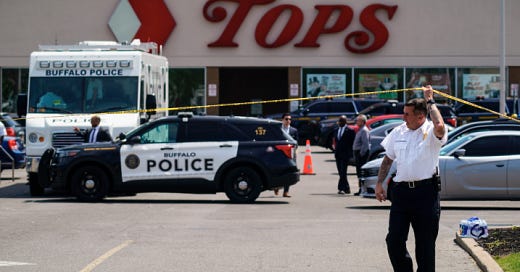My thoughts and prayers are with the suffering families in Buffalo, New York. Please take a personal moment of silence and spend it in reverence to those tragically taken and those who love them and need our prayers.
In four events over the last year, at least 26 people were killed and at least 70 injured in events some have linked to racist motivation…
Keep reading with a 7-day free trial
Subscribe to In His Words to keep reading this post and get 7 days of free access to the full post archives.





